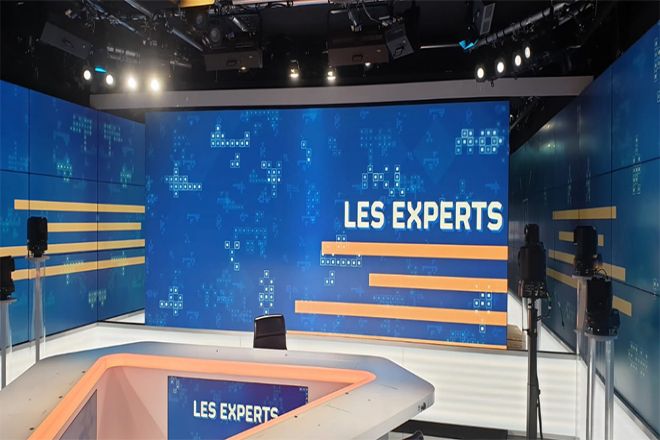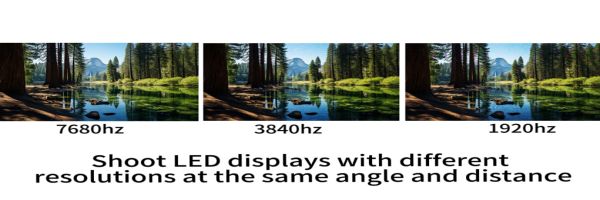Introduction

The quality of the LED display directly affects the dissemination of information, and the refresh rate is one of the important factors that determine the quality of the display. This article will discuss the refresh rate of LED displays in detail.
1. What is the refresh rate of the LED display?
Refresh rate refers to the number of times the display redraws the image in one second, measured in Hertz (Hz).
For example, a 60Hz refresh rate means the display can redraw the image 60 times per second. The higher the refresh rate, the smoother the displayed dynamic images and the better the user experience.
2. The impact of refresh rate on LED display is mainly reflected in the following aspects

Image display smoothness: The refresh rate directly affects the smoothness of the image. A high refresh rate can ensure smoother, flicker-free images, while a low refresh rate may cause flickering or intermittent images, affecting the viewing experience.
Eye comfort: The refresh rate also affects eye comfort when viewing LED displays. A high refresh rate can effectively reduce eye fatigue and discomfort, while a low refresh rate may cause eye fatigue, dryness, and other problems.
Performance of dynamic images: A high refresh rate can better handle dynamic images, reduce blur and smear, and make moving images clearer and smoother. A low refresh rate may cause blurring or tailing of dynamic images.
Viewing distance and angle: In some cases, a low refresh rate may cause noticeable flickering or streaking when viewed from a certain distance or angle, affecting the viewing effect. A high refresh rate can expand the viewing distance and angle and improve viewing freedom.
Power Consumption and Thermal Dissipation: High refresh rates can lead to higher power consumption and thermal dissipation issues because images need to be updated more frequently. This may require more powerful power and cooling systems, adding cost and complexity.
Energy consumption and cost: Generally speaking, the higher the refresh rate of an LED display, the higher the energy consumption and cost will increase accordingly. Therefore, choosing an appropriate refresh rate can not only improve the display effect but also save energy and reduce operating costs.
3. How about choosing among the common refresh rates in the market: 1920hz, 3840hz, and 7680hz?

When choosing the refresh rate of an LED display, we must first clarify the impact of the refresh rate on the display effect. Common LED display refresh rates on the market include 1920Hz, 3840Hz, and 7680Hz. Different refresh rates adapt to different usage scenarios and needs, so you need to consider carefully when choosing.
- 1920Hz:
The 1920Hz display is relatively low in price and is suitable for scenes that are price-sensitive and do not have high requirements for display quality. At a normal viewing distance, the 1920Hz display can provide a relatively stable picture, and flickering or jitter is not easily noticeable.
For example, in some information display occasions, such as shopping malls, exhibition halls, etc., the use of 1920Hz display screens can meet basic display needs.
- 3840Hz:
For some scenes that need to show high-speed motion or require high picture smoothness, such as live sports events, electronic games, etc., 3840Hz displays have more advantages.
Its high refresh rate can reduce image jitter, provide clearer and smoother pictures, and give viewers a better viewing experience. At the same time, a high refresh rate display can also reduce eye fatigue and make the viewing process more comfortable.
- 7680Hz:
It is the LED display with the highest refresh rate currently. It can provide extremely smooth and delicate pictures and is very suitable for occasions that have extremely high requirements on display quality, such as commercial advertising, high-end conference rooms, etc.
However, high refresh rates also mean higher prices and energy consumption. Therefore, when choosing a 7680Hz display, you need to weigh the relationship between its high display quality and economic cost.
Conclusion
To sum up, choosing the appropriate LED display refresh rate needs to be decided based on actual needs and budget.
When the budget is limited, the 1920Hz monitor is an affordable choice; if you need better display effects, the 3840Hz monitor is more suitable; and if you have extremely high requirements for display quality and are willing to pay a higher cost, then the 7680Hz monitor Might suit you better.
By comprehensively considering the usage scenarios, needs, and budget, you can find the LED display refresh rate solution that best suits you. Of course, please contact us if you need it!
